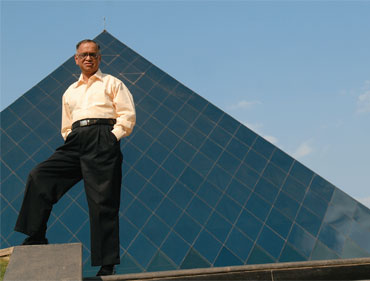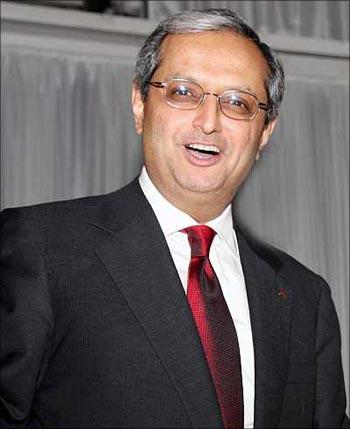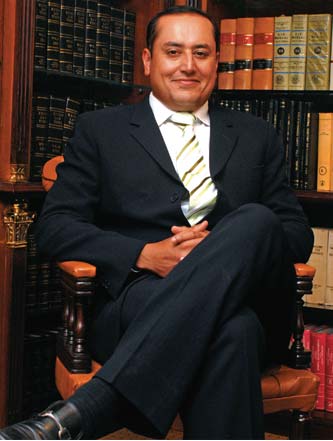
Stories of extreme hardship, braving impossible odds and innumerable sacrifices, abound in the lives of nearly 90 per cent of the students in the country. But among them, some perform exceptionally well. Their academic laurels are so brilliant, that at times their CV looks intimidating. And each one acknowledges that it's the right education that made them what they are today. Careers360 identified 40-odd brilliant students of this country. Most of them came from very dire conditions.
Here, in today's feature we look at five outstanding achievers who made it to the top.
Narayana Murthy: The IT czar of middle-class dreams
As a boy, Nagavara Ramarao Narayana Murthy was someone who could easily go unnoticed in a crowd. He was short, but sharp. Often, his seniors in school came to him for solving science problems.
Murthy came from a lower middle class, Brahmin family from Mysore. His father, a school teacher, was fond of English literature. And like all the boys of his class, he too had dreams of going to IIT. So he worked hard, studied in the shade of boulders close to Chamundi hills, and helped many in his class to prepare for the entrance exam.
Murthy wasn't surprised when he got through. When he broke the news of his success to his father, it is said his words were: 'Anna, I have passed the exam, I want to join IIT." As proud as he was of his son's achievement, he couldn't afford the fees and so Murthy had to relinquish his IIT dreams. Murthy stayed back in Mysore. When asked about his decision to stay back, he said to his friends, it is not the institution but you alone who can change your life with hard work.
He lived up to his own words. Several years afterwards, Narayana Murthy revolutionised India's software industry by founding Infosys. And this has made him the icon of middle-class dreams. He redefined India in the eyes of the world. India was no longer a third-world country, but a rapidly developing nation. In the process, he promoted thousands of young, creative Indian minds to the world and made Infosys and India a hub of talent.
It is known to the world that he founded Infosys along with six others with just a few thousand rupees which his wife, Sudha Murthy gave. It was an incredible risk to take, but Murthy knew it was going to work, just as he knew he would get through IIT. Which he did, eventually. After Murthy graduated from the National Institute of Engineering, Mysore, he joined IIT, Kanpur.
Thanks to IT and its development, the little known romance of Murthy and Sudha Kulkarni is talked about everywhere. It is hard to believe reading from Sudha's account of an introvert, quiet Murthy, that he is the same person to have revolutionised the IT industry.
When Murthy was asked by Sudha's father about his ambitions, he said he wanted to become a politician in the communist party and wanted to open an orphanage.
While he has opened several orphanages since, his dream of becoming a politician still remains unfulfilled. After retiring from Infosys, Murthy was hoping to become President of India after the term of Dr Abdul Kalam. Even though he denied having political ambitions, his supporters would like to see him on the throne.
Our Mysore Murthy is, no doubt, a visionary who has ignited millions of young minds.
Education
Honours and Awards
Part I: Education made him: Dr Manmohan Singh
Part II: Kiran Bedi, CV Raman, Shyam Benegal, P Venugopal
Part III: Homi Bhabha, Arun Sarin, Rabindranath Tagore, Hafeez Contractor
Part VI: India's best students: Zubin Mehta, Medha Patkar

Chairperson of PepsiCo's board of directors, Indra is the highest-ranking Indian-born woman in corporate America, and she attributes much of her success to her upbringing in India. "Being a woman and being foreign-born, you've got to be smarter than anyone else," says Nooyi, who often dons a sari at PepsiCo events.
Education
She completed schooling at Holy Angels AIHSS, Chennai, has a BSc (Chemistry) from Madras Christian College in 1974 and a PGDM from IIM Calcutta. In 1978, Nooyi earned a Master's degree in Public and Private Management from Yale School of Management. At Yale, she worked as a receptionist from midnight to 5 am to earn some money.
Career graph
Starting her career in India, Nooyi held different positions at Johnson & Johnson and textile firm Mettur Beardsell. In the US, Nooyi worked with BCG, Motorola and ABB. Nooyi joined PepsiCo in 1994, and became chairperson in 2007.
Childhood memories
As a child, Indra's grandfather insisted on academic excellence from his grandchildren. According to Indra, when she did not figure in the top three ranks in class, she preferred to throw herself under a bus than face her grandfather.
Awards

"To do well you have to put a lot of yourself into it."
Born in Nagpur, Pandit was the Citigroup's youngest CEO when he took over in 2007. The first Indian to achieve this feat, the job was touted as the toughest in the world due to the company's poor performance.
A brilliant boy in school, he moved to US when he was 16. After finishing his Master's in electrical engineering and MBA from Columbia University, he was determined to get a PhD in a different subject. In those days, students preferred to either study medicine or engineering. And that was the time when his guide advised him to take up finance, as it was a good field. He followed the advice and switched to finance.
For a brief span, he taught at Indiana University Bloomington, Columbia's Business School. He stepped into the corporate world in 1994 at Morgan Stanley. His administrative and technical skills, plus an ability to make himself indispensable to bosses like John J Mack and Phillip J Purcell, fuelled his career at Morgan Stanley, where he became the president. He dealt with the Institutional Securities Division, Worldwide Institutional Equities Division. For him, this was an interesting area to work on.
Education

Pioneer of web-based e-mail
BTech, BITS Pilani
BSc (Honours) California Institute of Technology, US
MS Electrical Engineering (Stanford)
"A good entrepreneur never gives up"
Sabeer Bhatia has done the unconventional ever since he decided to study abroad at the age of 19; two years into undergraduate education at the Birla Institute of Technology and Science, he qualified for a transfer scholarship at Caltech, considered to be the world's most competitive scholarship. After graduating from Caltech in 1989, he pursued an MS in Electrical Engineering at Stanford University.
At the age of 27, Bhatia was no longer interested in working for others, and together with Jack Smith, began chasing what many people in Silicon Valley deemed a "crazy idea" -- a free e-mail service. They raised about $300,000 for their venture -- Hotmail. Within a year, Hotmail had one million subscribers. So revolutionary was it that Microsoft bought it for $400 million after 18 months.
Did you know?
Award
TR100 by MIT, given to 100 young innovators who are expected to have the greatest impact on technology.

MSc, Physics, IIT Madras, 1977
MTech, Comp. Science, IIT Madras, 1979
Poor financial circumstances forced S Gopalakrishnan to abandon studies at the age of 18. He was born to a lower middle-class family in Kerala. At a tender age, he started a small plumbing business. But he was very keen to study further. His parents' wish was to make him study medicine, but fell short of two marks in the entrance exam.
Later he earned a Bachelor's and Master's degree in Physics from Indian Institute of Technology, Madras. At the time, IIT Madras had one of the few mainframe computers in Asia and he learnt Fortran (a programming language). He stayed on and did a Master's degree in computer science.
During campus placements, despite offers from large business conglomerates, he got on board the little known Patni Computer Systems, where he became a part of the core team. After three years with Patni, Gopalakrishnan made another unusual choice, of joining a start-up company (Infosys) in July 2, 1981. In his initial years at Infosys, Gopalakrishnan looked after the technical aspects, eventually managing customer delivery.
On June 22, 2007, he became the third founder member to take over the position of CEO and MD of Infosys Technologies Limited.
Did you know?
In the initial years of Infosys, he taught recruits how to write code without errors.